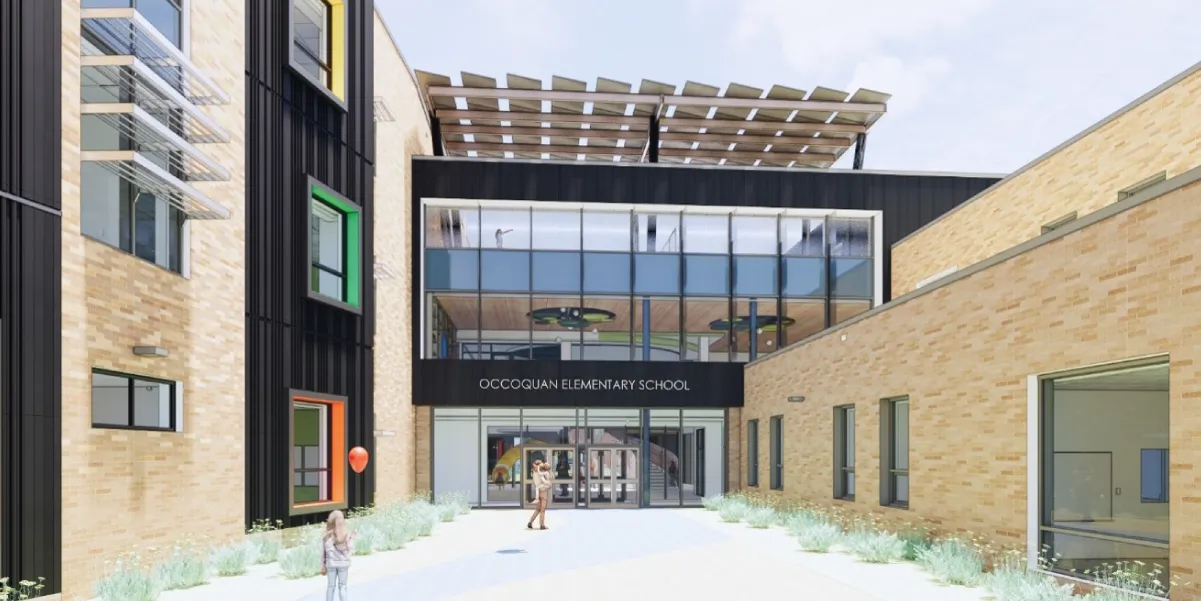Oldest School in PWCS Will Be Replaced with New Net-Zero School

Provided by PWCS
Occoquan Elementary School, the oldest school in Prince William County Public Schools (PWCS), will soon be replaced with a new, net-zero school building. Occoquan Elementary was first built as a two-room schoolhouse sometime between 1867 and 1899. The current building has remained at its present location since 1927, making it the oldest (still standing and in use) public school in PWCS.
The new Occoquan Elementary building will have a design capacity of 850 students and will greatly reduce greenhouse gas emissions. The new building will have a sustainable design, which will feature solar panels, geothermal wells, LED lights, and large windows to bring in significant natural light. These eco-friendly details will contribute to the building’s net-zero rating, which refers to the building’s balance of greenhouse gases produced and removed from the atmosphere.
The building design will be used as a teaching tool for students and will feature an outdoor classroom with visibility of the school’s solar panels, a display where students can view the school’s energy consumption, and collaboration spaces throughout the building. Grade levels will also be arranged as layers of a forest: kindergarten-forest floor, first grade-herb layer, second grade-shrub layer, third grade-understory layer, fourth grade-canopy layer, and fifth grade-emergent layer.
Michael “Buddy” Lint has been the principal at Occoquan for seven years. He loves his school community and can’t wait for the new building to open.
“The entire Occoquan community is extremely excited to be blessed with the very first net-zero school in the county. This is a huge honor for this community, and one we are very proud of,” he said. “As they say, ‘When life gives you sunshine, make renewable energy!’”
From start to finish, the construction of the school has a four-year timeline. The new school is at the mid-point and set to be completed in December 2025. It will open to students a month later, in January 2026. Additional improvements to the school site, including a new recreational field, will be built in 2026.
“We’re seeking to build a premier education experience that we think is going to become a destination to visit and learn from. It’s going to be a very special place to go to school,” said Heather Diez, director of facilities for PWCS.
PWCS is committed to reducing greenhouse gas emissions. As part of this commitment, the division will be implementing the same technology and sustainable methods in other schools during upcoming renovations. These strategic measures are expected to significantly contribute to the reduction of the division’s overall carbon footprint, reinforcing PWCS’ dedication to environmental sustainability.
